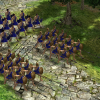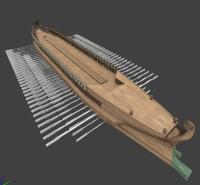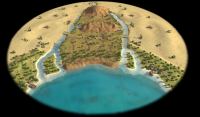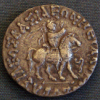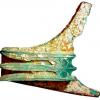Leaderboard
Popular Content
Showing content with the highest reputation on 2015-07-16 in all areas
-
If you want to disable formations by default check in binaries/data/mods/public/simulation/helpers/Commands.js. Line 1398 choose the formation to use when none is selected when ordering multiple units (formation/null for none). BUT this is not the issue. The problem is about when units should form or not and where. I'm currently trying to make units ignore their formation for civil tasks (gathering, building, repairing) but still have some problems with the column for long range walks (i.e when asking to build something all accross the map, they should go near in column then disband, same for gathering, considering once they are there, there will be local stuff to stay there). After that I can check battle dynamics. The first thing to do is preventing units at range to stop fighting to gather somewhere under fire then return to the battle. Since most formations are disbanded in actual fighting it seems logic not to build and disband for the fun. Note: I'm using Delenda Est for testing and implementing, since the gameplay is more suitable for formations.2 points
-
This a response to the topic 'Bring something new' but is an idea By now, once ressources are gathered, they are acquired . You can have 1 survival woman remaining on the map but still have 52000 food , 65000 wood , 23542 metal and 12555 stone ... wtf ? lol Ressources should belong to a CC and no more to a virtual portofolio up on the screen. ____________________________________ Here some idea. - Each ressources gathered belongs to the CC where it has been gathered - You can delivery more ressources to a CC (even to allies ones) thanks to traders (with added values?) and ennemies can steal the value by killing it (like now). Roads existance will be then relevant. - Rather than make each unit a one-shot investment, make them a charge for your city : each unit work but also consum on time ! As a result, garnision cowardely unlimited units will lead to starvation. - Buildings and units can be convertable : convert units to you, but also convert buildings or siege engines or even make them a source of wood and/or stone (like ruins) - Make a lake of ressources a reason to revolt (some units convert to gaia ?) - Each CC detroyed/captured will deliver the goods in it - ... ____________________________________ I think make the ressources more material and less virtual can be a good way to underline moreover the importance of position on the map by assuming the consequencies a new position and NOT just the benefit (this will reduce the ennemy neigbour tower CC spam syndrom) and put an added macro value to the game and even a micro ! as the player would have to protect the cities but the roads as well ! (like did the succesfull Romans ) but could make some good pirat-strike on goods1 point
-
As usual, a picture Not so extremely much more to do before making a lower resolution version for ingame, baking the textures and normal and specular maps and then starting on the damaged versions and animations. I'm still unsure though some tiny details ... Thanks, but I read that a long time ago. I also came to read some of the literature he mentions as references. It turns out however that some statements in the post are contradicted by it. I also came to realize that the drawings on navistory he references were made with a lot of artistic freedom. At least when you compare them to the coins, reliefs, mosaics, vase-paintings, descriptions and archeological finds of about the first and second punic wars. (I seriosly also looked at pictures of about 200 punic, roman and greek coins ...) Unfortunately, now I notice every time ancient ships are not portraited accurately in modern games/movies/art1 point
-
Hey works thanks. <data type='decimal'/> I forgot to change to data type. I think I will implement in Delenda Est. I think it will be default to 10 food every minute for melee infantry and 5 food, 5 wood every minute for range infantry unit. 10 metal per minute for mercenary unit (metal is worth more than food and wood, but mercs cost 0 pop and they are greedy vyrodky).1 point
-
Hello, you have to click on the little gear near the Ai name1 point
-
1 point
-
Stronghold Crusade work in this form, but I don't think how made this in 0ad. Veru different system.1 point
-
1 point
-
Most of this can be saved for the Regicide Game mode. Mk.1 point
-
I love the stronghold's system. Others things like make your own army with blacksmith is a great idea. @Topic In 0ad I think a granary and stockpile just gathering some % a total resources and other part continue in virtual storage.1 point
-
Also quite similar to the granary and stockpile system of the Stronghold series which makes economical destabilization as a possible strategy which you can use against your opponent.1 point
-
At least this part sounds like #3157 (Coordination of attack with an AI), which is available in dev (SVN) version and will be present in A19.1 point
-
So idea for adding low bridges: * Change Obstruction component into an ObstructionModifier. Instead of just adding a general obstruction, this could add or remove obstructions of different size per passability class. * Implement a virtual terrain, bridges could modify the virtual terrain to let units follow that instead of the real terrain. By default, values are null, but when non-null, these terrain heights are preferred over the non-virtual terrains. This way, a bridge could enable units to pass through a part of deep water, while it could disable boats to pass there. As such, influencing the pathfinder (that shouldn't know about heights). While the virtual terrain could be used to lift units at those position up to the bridge level. It could also make stairs possible, where the passability of mountains can be edited by the stair. This wouldn't need a virtual terrain though.1 point
-
Bridge Feature Work points Here's a tentative list of things I thought might be worth considering from features perspective. It would be good if we can develop it further, prioritised from community perspective and commented by the developers as to their feasibility. Must-have FeaturesAbility to build bridges across waterways.The bridges may be traversed by most units. In-game prerequisites?:Restricted to specific civilisations?Town or city level should be a basic requirement?Engineering tech development may also be a prerequisite?Perhaps longer lengths ought to be dependent on tech dev?Introduce engineer units (pros/cons?)Certain bridges (pontoon and smaller stone bridges) may not allow siege engine movement? TypesPerhaps it would be best to start with the simplest and the most basic bridge type first to test the concept and its impact on the game as well as facilitating quicker implementation.Wooden bridges (degradeable) Pontoon bridges (degradeable) Short stone bridges (permanent) Long-span stone bridges (permanent)Here's a good cross section of Roman bridges that have survived to the present day. That they've lasted means that they're all stone bridges and many have later modifications which would not be suitable for 0AD. Nice-to-haves:Degradation Destruction through enemy action Between different elevations Overlapping movement Integration with roads1 point
-
Hmmm, I think it could be like Docks. Docks cannot built on shoreline that is too tall. Bridge can use same placement code?. Have Bridge always be same height above water table, with ends that taper down like ramp (usually hidden by terrain but if terrain low the ramp will show, just like the back side of Greek dock). The span in middle gets "segments" added seamlessly like a wall that doesn't have towers. EDIT: With imagination I see this. Can click one end of the bridge at shoreline (has shoreline placement requirement like dock), then drag to the other side of river. If drag too far, bridge spirit goes red (have tooltip like walls that tells you how far bridge is and cost, it tell you if you go too far too). Click the end at the opposite shoreline, then units start building the bridge from starting end. If you have units on the opposite bank you can click them onto the end they can start building from their end to cut building time in half. Foundation before they start building looks like pylons in the water. Persian one can be wider and look like pontoon bridge (see: Xerxes; it can go longer, but is weaker; say most civs can go 5 segments long, but Persia can go 7). Roman one can have stone pylons but wooden span (they tend to make their bridges wooden so they can fire the bridge in case of enemy invasion). Red ends ramp downward. If bank slope upward then it just clip the ramp no problem. If the bank is too steep or cliff, it be like dock and cannot be built. Yellow spans are short, medium, long, just like walls and swap into place depending on need of length. Once build, any player can use it, but only owner can delete it (maybe it can be "capture" when captuiring implemente). Romans can upgrade their bridge to be full stone like this:1 point
-
I'm referring to the riverbanks being at different heights. Possible solutions would be to restrict bridge placement or terrain flattening. I'm guessing the main structure of the bridge would be built like walls, but unlike walls, it should be a single finished structure.1 point
-
I agree. Howeve, that dosn't make it easier to implement. Bridges could be placed like walls for their length - while checking for placability like e.g. docks at their ends (and ground passability as well). To be even the bridge parts has to be adjusted in height over ground though (other things snap to the ground). And still the "entities walking on entities" thing needs to be done. (I don't really like the curent implementation of units on walls. If units would actually be able to walk on walls we had the same needs for walls as for bridges) Even the current default entity/actor placement is not very clever. It simply adjust the height by snapping the ancor - likely the center - to the ground. IMO the average height of the area covered by a entity/actor should actually be used to snap its height to. (and still there will be visual issues becuse not all buildings - and especially actors like stones - are not reaching deep enough into the ground - that's an art task though)1 point
-
Hmm, I don't see problem with the height thing, maybe clarify? Length--Just have min and max length. About boats, ancient bridge were not the big bridge of today. Only small watercraft would fit beneath them, certainly not warships! So, the bridge could block boat movement and be perfect realistic.1 point
-
Technically, they are and they do, with planes and other flying things The answer is simply to have a separate "pathfinder" for such cases (walking on entities, be they bridges, walls, or other things). The hardest part would be combining them so units can transition between the different pathfinders, but it would be extremely cool. On a related note, I think we'll end up with multiple pathfinders anyway, I'm quite skeptical that one alone can handle infantry, cavalry, vehicles, and boats in a reasonable manner, but we'll see. Building bridges would be tough as well, making them adjust to different heights and lengths.1 point
-
Units going over each other will never be supported. The pathfinder is 2D, and the position component doesn't store the height, but calculates it based on the terrain. So if you place a bridge over the water, you must be sure that no boats can pass under it, or that no other entities (like fish) are at that place. For roads, the new pathfinder will be faster, because it uses a uniform speed grid. That uniform grid allows for certain optimisations severely reducing the number of calculations needed. When that grid would be non-uniform (f.e. because speed is higher on roads), then the new pathfinder will be worthless. The possible intermediate way would be that the pathfinder ignores, but that the speed does increase when units walk on roads. However, that would require a lot of micro to keep the units on the road.1 point


